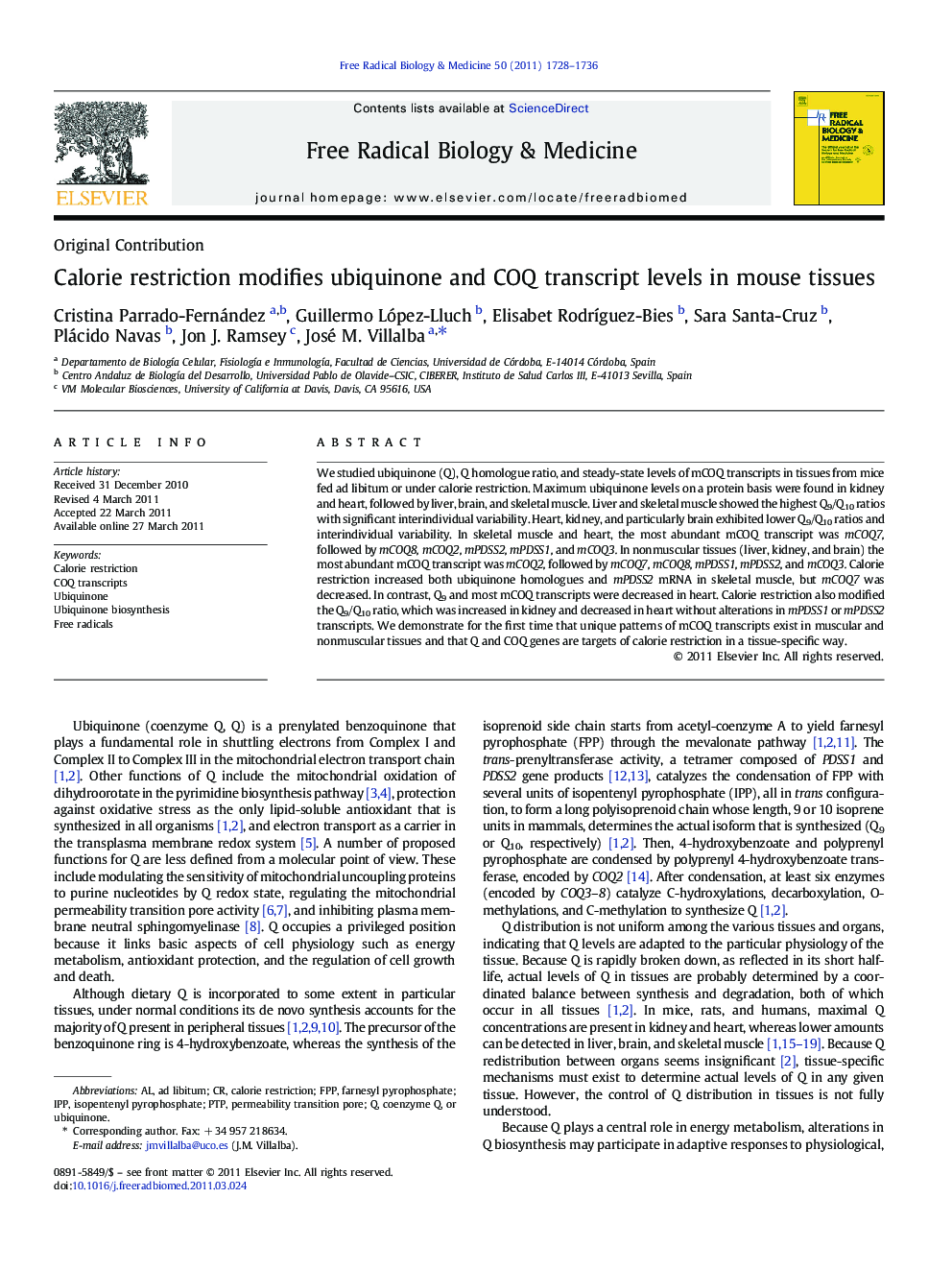| Article ID | Journal | Published Year | Pages | File Type |
|---|---|---|---|---|
| 8271764 | Free Radical Biology and Medicine | 2011 | 9 Pages |
Abstract
We studied ubiquinone (Q), Q homologue ratio, and steady-state levels of mCOQ transcripts in tissues from mice fed ad libitum or under calorie restriction. Maximum ubiquinone levels on a protein basis were found in kidney and heart, followed by liver, brain, and skeletal muscle. Liver and skeletal muscle showed the highest Q9/Q10 ratios with significant interindividual variability. Heart, kidney, and particularly brain exhibited lower Q9/Q10 ratios and interindividual variability. In skeletal muscle and heart, the most abundant mCOQ transcript was mCOQ7, followed by mCOQ8, mCOQ2, mPDSS2, mPDSS1, and mCOQ3. In nonmuscular tissues (liver, kidney, and brain) the most abundant mCOQ transcript was mCOQ2, followed by mCOQ7, mCOQ8, mPDSS1, mPDSS2, and mCOQ3. Calorie restriction increased both ubiquinone homologues and mPDSS2 mRNA in skeletal muscle, but mCOQ7 was decreased. In contrast, Q9 and most mCOQ transcripts were decreased in heart. Calorie restriction also modified the Q9/Q10 ratio, which was increased in kidney and decreased in heart without alterations in mPDSS1 or mPDSS2 transcripts. We demonstrate for the first time that unique patterns of mCOQ transcripts exist in muscular and nonmuscular tissues and that Q and COQ genes are targets of calorie restriction in a tissue-specific way.
Keywords
Related Topics
Life Sciences
Biochemistry, Genetics and Molecular Biology
Ageing
Authors
Cristina Parrado-Fernández, Guillermo López-Lluch, Elisabet RodrÃguez-Bies, Sara Santa-Cruz, Plácido Navas, Jon J. Ramsey, José M. Villalba,
